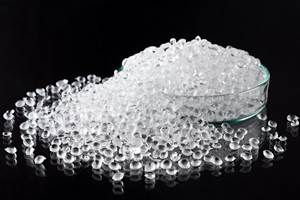Fly-Ash Filler Stages a Comeback
Fly ash, a silica and alumina residue collected from the chimneys of coal-fired power plants and incinerators, is both a waste product and a promising low-cost filler for plastics.
Fly ash, a silica and alumina residue collected from the chimneys of coal-fired power plants and incinerators, is both a waste product and a promising low-cost filler for plastics. For 50 years, most fly ash has gone into cement, where it improves compressive strength and curing. Refined fly-ash fillers have been used in liquid-resin applications like vinyl plastisols and thermoset bulk and sheet molding compounds for decades.
Now a number of suppliers are trying to develop thermoplastic markets. In particular, fly ash has surfaced in automotive and construction applications that involve not only melt compounding but also much higher loadings than ever before.
Loading up on ash
For years, compounders located near coal-fired power plants have put small amounts (1-2%) of ash into dark-colored compounds to save money and add stiffness. Sources at the American Coal Ash Association, Alexandria, Va., say products from Stanley Tool handles to parts on early General Motors Corvettes included small amounts of fly ash. But there were no known applications with high loadings until about five years ago when Lex Technologies in Mississauga, Ont., compounded 50-80% ash into recycled PE to make building materials.
Although that company went bankrupt, at least three commercial projects since then use 25-70% ash. The highest loadings<60-80%
Compounds of up to 50% fly ash are being extruded and compression molded into building materials like roof shakes and lumber. The ash adds stiffness and reduces cost. Ecomat Inc., Poughkeepsie, N.Y., began using 25% fly ash in roofing and lumber two years ago. Its compounds for recycled-polyethylene plastic lumber now use 50% fly ash and are foamed to the density of wood. Ecomat, which holds patents on compounding with a variety of odd mineral fillers
Compounds of 15-30% fly ash are in prototype testing for injection-molded car trim. Besides adding stiffness, fly ash raises the "recycled" content of auto parts. Vi-Chem Corp., Grand Rapids, Mich., is conducting long-term weather testing of vinyl and TPE auto trim compounds containing fine-particle (below 20 microns) fly ash. Vi-Chem uses both single- and twin-screw extruders. "The choice of single versus twin is resin driven," says Vi-Chem research chemist Bo Wang. "If you don't need intense mixing for the matrix resin, you use a single screw."
Pros and cons
Properties of fly ash are much like those of calcium carbonate but with significant differences. Fly ash is essentially finely powdered sand but without sharp edges like calcium carbonate. The ash consists of small balls
The spheres add stiffness and compressive strength to plastic compounds, but at the expense of increased brittleness. On the other hand, some processors who use ash say the spheres act like small ball bearings to improve throughput. Fly ash also comes in an amorphous, non-spherical form, which is of little current commercial use.
Fly ash is less dense (2.22 g/cc) than calcium carbonate (2.7 g/cc). Thus, in compounds, 30% by weight fly ash can replace 36% calcium carbonate while retaining the same volume fraction, says Vi-Chem's Wang.
Color is one drawback. Fly ash is dirty gray or tan, whereas calcium carbonate is bright white, so fly ash can be used only in dark-colored compounds. Also, fly ash is abrasive, but how abrasive depends on the type of ash
Fly ash is inconsistent in properties and particle size (1-100 microns with 25-50% being >10 microns). Prices range from $13 to $28/ton (0.65-1.4¢/lb, depending on consistency. Refined grades can cost twice that or more. Processors can also ensure higher quality by obtaining fly ash from consistent sources. "It's important to get it not just from one utility plant, but from one unit at one utility," says Aron McBay, manager of new-product development at Boral Technologies, Phoenix, which classifies and supplies fly ash as a cement filler.
Some ash also contains undesirable residues of activated carbon, which adsorb oils and resins. So commercial fly ash comes only from coal-burning utilities. Fly ash (as distinct from bottom ash collected at the bottom of furnaces) will trap 99% of any heavy-metal contamination in what was burned. So ash from waste-to-energy incinerators or municipal garbage, which may contain lead and mercury, isn't used in plastics.
Related Content
Graphene Masterbatches for Flexible and Rigid Polyolefin Packaging and Beyond
Brazilian start-up Gerdau Graphene joins a growing group of graphene additives suppliers with a focus on boosting properties of large volume commodity thermoplastics.
Read MoreResins & Additives for Sustainability in Vehicles, Electronics, Packaging & Medical
Material suppliers have been stepping up with resins and additives for the ‘circular economy,’ ranging from mechanically or chemically recycled to biobased content.
Read MoreK 2022 Additives & Materials: Sustainability in the Lead
Nearly all of the new additives highlighted at the big show are aimed at enhancing recyclability of commodity resins and some volume engineering resins such as nylon and PC. A few new materials, on which we had not previously reported, also surfaced at K 2022.
Read MoreAt NPE2024, Follow These Megatrends in Materials and Additives
Offerings range from recycled, biobased, biodegradable and monomaterial structures that enhance recyclability to additives that are more efficient, sustainable and safer to use.
Read MoreRead Next
Troubleshooting Screw and Barrel Wear in Extrusion
Extruder screws and barrels will wear over time. If you are seeing a reduction in specific rate and higher discharge temperatures, wear is the likely culprit.
Read MoreUnderstanding Melting in Single-Screw Extruders
You can better visualize the melting process by “flipping” the observation point so that the barrel appears to be turning clockwise around a stationary screw.
Read MoreProcessor Turns to AI to Help Keep Machines Humming
At captive processor McConkey, a new generation of artificial intelligence models, highlighted by ChatGPT, is helping it wade through the shortage of skilled labor and keep its production lines churning out good parts.
Read More






.png;maxWidth=300;quality=90)















